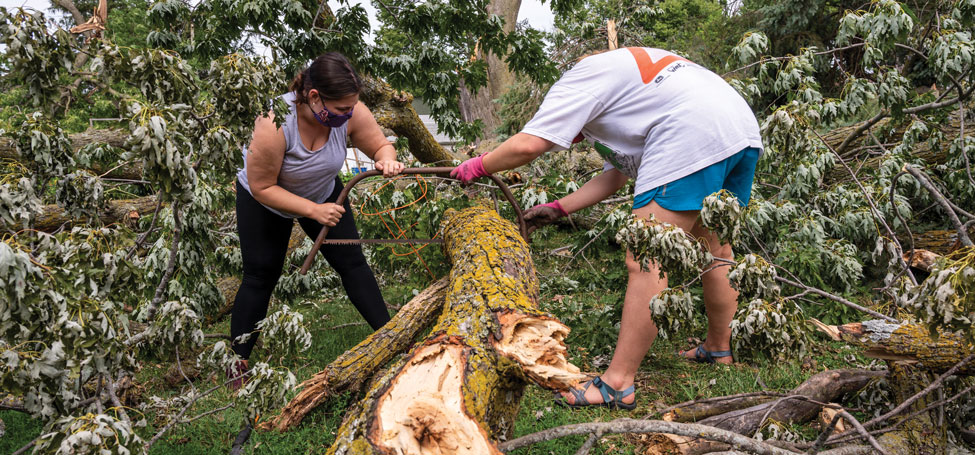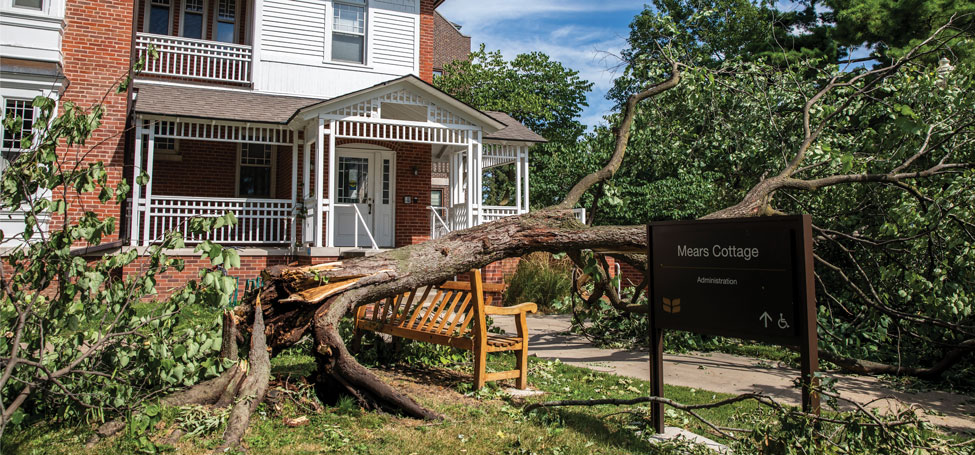“It kept getting more intense.”
It got dark quickly around noon on August 10 at the Elm Street house in Grinnell rented by brothers Jackson Breshears ’21 and Kort Breshears ’23 and their roommates.
“At first we thought the fast winds were super cool,” Jackson says. “But then it kept getting more intense. Out of nowhere we all got a little quiet. We had the same thought: Perhaps we should go to the center of our house in case there’s a tornado. We hadn’t heard of a derecho before.”
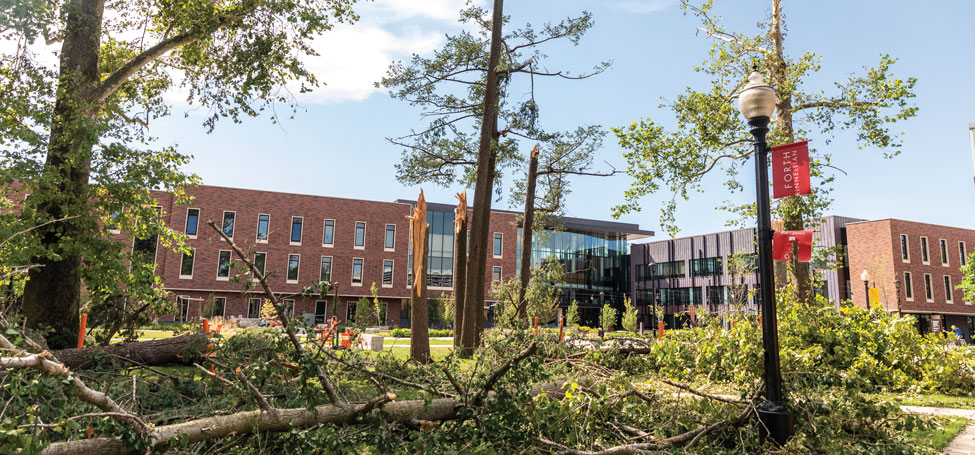 A derecho (pronounced duh-RAY-cho) is a wide line of severe thunderstorms with high lateral winds, comparable to a hurricane but without the advance warning. One look outside in Grinnell and other parts of Iowa showed just how much destruction a derecho can leave behind. For Grinnell College alone, the storm caused an estimated $2 million in structural and tree damage. For the Breshears brothers and many others, it caused a week or longer without power.
A derecho (pronounced duh-RAY-cho) is a wide line of severe thunderstorms with high lateral winds, comparable to a hurricane but without the advance warning. One look outside in Grinnell and other parts of Iowa showed just how much destruction a derecho can leave behind. For Grinnell College alone, the storm caused an estimated $2 million in structural and tree damage. For the Breshears brothers and many others, it caused a week or longer without power.
While the storm took a physical toll on Grinnell, it also sparked an emotional outpouring of camaraderie. From campus to every corner of town, Grinnellians bonded together to assist one another in countless ways, says Sarah Smith, director of outreach programs and events.
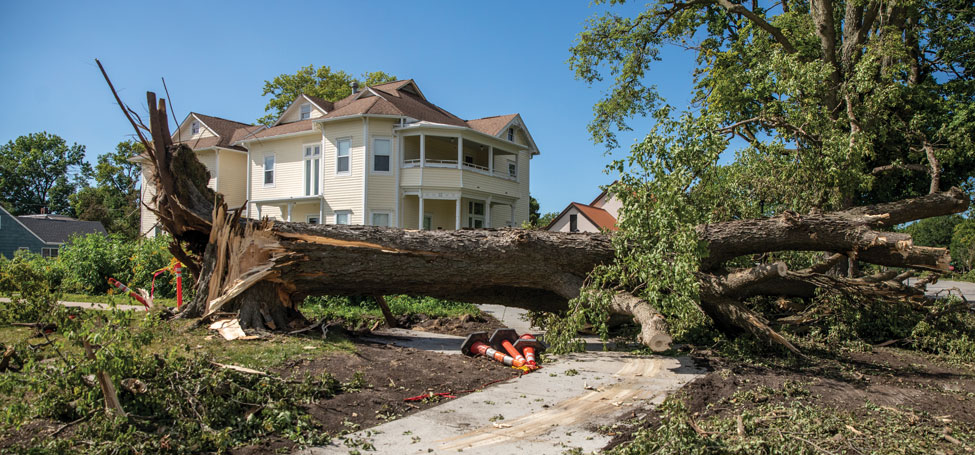 “It’s been really awesome to watch what I always knew was here in Grinnell — the great community spirit and caring for each other,” she says.
“It’s been really awesome to watch what I always knew was here in Grinnell — the great community spirit and caring for each other,” she says.
While compassion and volunteerism are important factors in storm recovery, it also takes coordination, preparedness, vision, and dedication. A dose of luck also helps.
“There were so many moving pieces to our storm recovery; it was absolutely crazy,” says Heather Cox, associate director of emergency management. “But somehow everyone fell into their niche and was able to make it all happen. I’m thankful that people came together and showed a lot of care for each other. It made me proud to be part of the Grinnell College team and to live in Grinnell.”
Trees and roofs take a beating
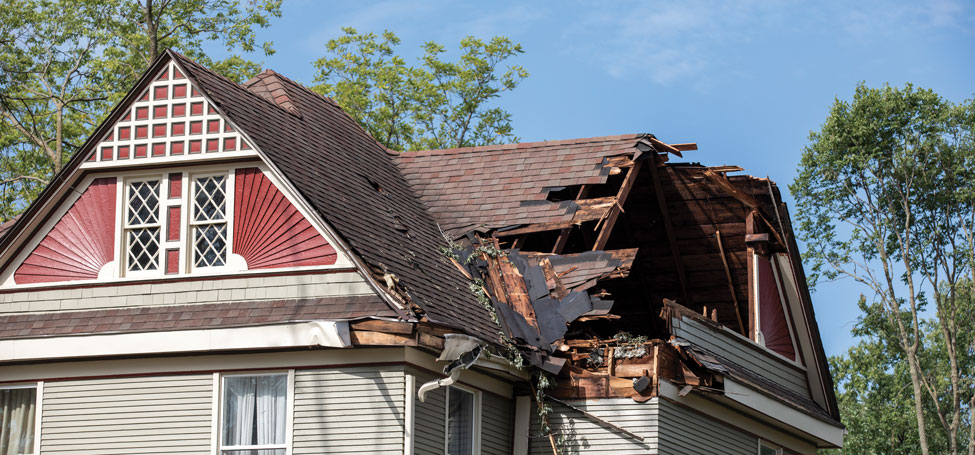 Of the 95 structures the College owns on campus and around town, about 80 had some type of roof damage. Most had minor damage with a few shingles missing. Neighboring trees hit a few structures, such as Chinese House, which had damage to its north roof gable. A tree branch punctured the roof of a guest house at 1002 Park Street. A fallen tree smashed railings at the golf course clubhouse. Two trees fell onto the Forum’s roof. On the north side of Herrick Chapel’s pitched roof, 75 percent of the shingles are gone.
Of the 95 structures the College owns on campus and around town, about 80 had some type of roof damage. Most had minor damage with a few shingles missing. Neighboring trees hit a few structures, such as Chinese House, which had damage to its north roof gable. A tree branch punctured the roof of a guest house at 1002 Park Street. A fallen tree smashed railings at the golf course clubhouse. Two trees fell onto the Forum’s roof. On the north side of Herrick Chapel’s pitched roof, 75 percent of the shingles are gone.
With very few students living on campus, online courses, and little damage to residence halls and the Joe Rosenfield ’25 Center, the storm’s main impact was pushing the start of the term back one week.
“The damage shouldn’t have much impact on operations going forward,” says Rick Whitney, assistant vice president for facilities management. “Most of the buildings affected were auxiliary buildings.” Still, repairs may take months.
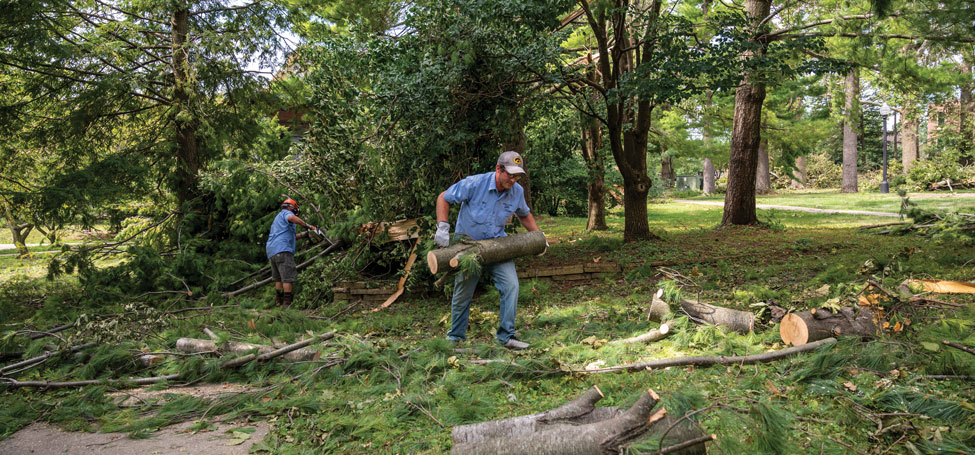 The College lost a large number of trees, which is particularly noticeable on central campus. Facilities management staff removed trees on the ground and on streets around campus first and then dealt with hanging trees. The last step is taking down old trees that have been destroyed, a process that could take six months or more. The College will submit separate insurance claims for the trees and structures. The damage estimate for each is about $1 million, Whitney says.
The College lost a large number of trees, which is particularly noticeable on central campus. Facilities management staff removed trees on the ground and on streets around campus first and then dealt with hanging trees. The last step is taking down old trees that have been destroyed, a process that could take six months or more. The College will submit separate insurance claims for the trees and structures. The damage estimate for each is about $1 million, Whitney says.
“My team [in facilities management] is really stepping up,” Whitney says. “As soon as they got off work, they had their own emergencies to deal with. It was double duty for a lot of folks.”
A natural disaster within a pandemic
Shortly after students departed campus in March to mitigate the spread of COVID-19, College leaders participated in a simulation to practice responding to a tornado in a pandemic. Cox says that made-up scenario involved limited damage and power outages, so it wasn’t a direct comparison to the derecho. But it was helpful.
“The scenario helped quite a bit in just thinking about what services we need to make available,” she says. “How would we make sure students would be fed if the power was out? How do we make sure people have access to an air-conditioned place? What we didn’t anticipate was the expansive internet outages across town and that a remote workforce would not have the ability to communicate because of cell and internet outages.”
After the storm hit, the first order of business was making sure students were safe. Without cell service, residence life coordinators went to residence halls to check in on them. Student Affairs staff began reaching out to off-campus students as well. Faculty and staff mobilized to check on each other. Dining Services staff members worked to determined how they would prepare meals.
“My team is really stepping up. As soon as they got off work, they had their own emergencies to deal with. It was double duty for a lot of folks.”
Cox says they put together an emergency operations center as best they could in a pandemic.
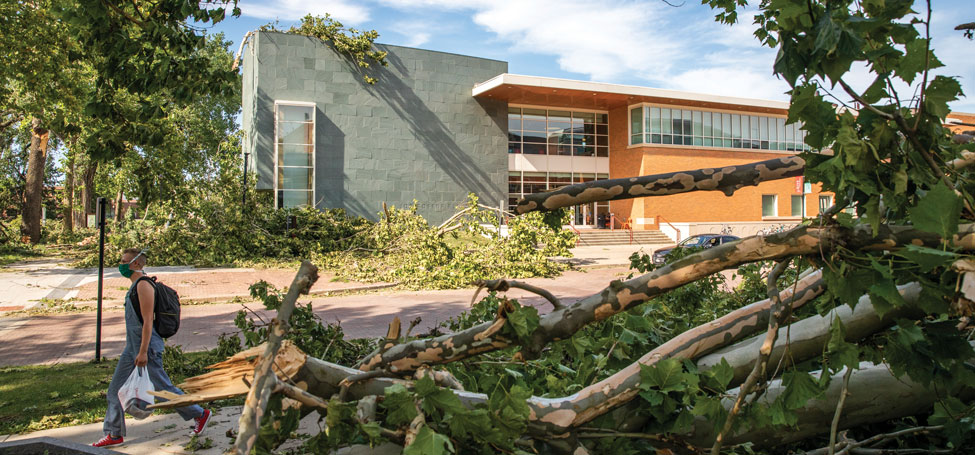 “We found a space where people could be together and still be socially distant,” she says. “We had President Anne Harris, Dean Elaine Marzluff, and Chief of Staff Angela Voos together so they could quickly make decisions. People could pop in and ask a question and get the answer very quickly and then go out and disseminate the information.”
“We found a space where people could be together and still be socially distant,” she says. “We had President Anne Harris, Dean Elaine Marzluff, and Chief of Staff Angela Voos together so they could quickly make decisions. People could pop in and ask a question and get the answer very quickly and then go out and disseminate the information.”
When it became evident that the power was going to be out for a significant amount of time, county officials reached out to Cox about opening a community shelter at the College.
“As an emergency operations team, we had already thought about what spaces made sense as a shelter,” Cox says. “That changed a little bit in a pandemic when we are trying to think about how to set up a shelter in a way that we can easily sequester it from the main campus and not have it right in the middle of where students and employees are coming and going.”
Putting the community in community shelter
The field house inside the Charles Benson Bear ’39 Recreation and Athletic Center opened as a community shelter two days after the derecho, becoming an example of community solidarity and preparation.
Eleven members of the Grinnell Fire Auxiliary — spouses of Grinnell firefighters — went through a Red Cross certification in January to become emergency shelter helpers.
“We didn’t realize that we would be setting up a shelter so soon, but it turned out to be perfect timing,” Aundi Smith, a shelter volunteer, says. “We were able to get people’s phones and laptops charged up and provide hot showers.”
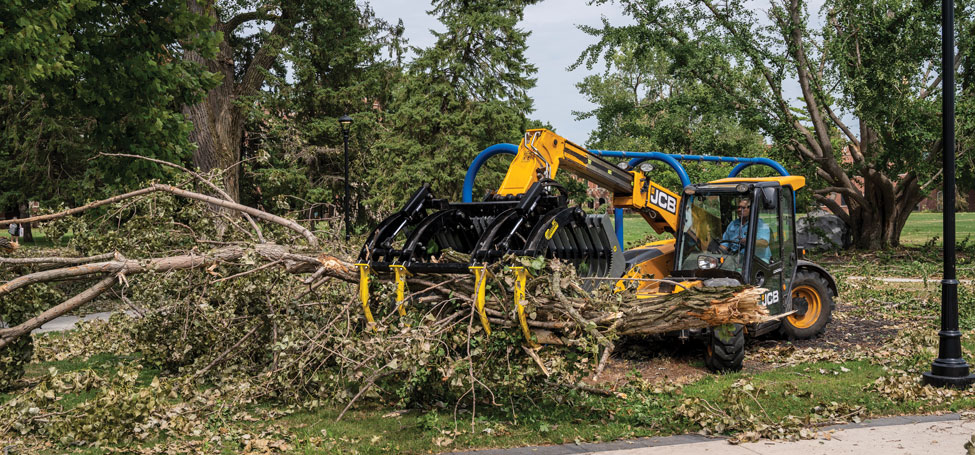 Several College staff members in facilities management, athletics, and campus safety helped get the field house ready. Local companies donated food, water, and supplies. Volunteers staffed the shelter 24 hours a day. In the first week, the shelter served 345 people. While it was a difficult time, Smith said those coming to the shelter were in high spirits.
Several College staff members in facilities management, athletics, and campus safety helped get the field house ready. Local companies donated food, water, and supplies. Volunteers staffed the shelter 24 hours a day. In the first week, the shelter served 345 people. While it was a difficult time, Smith said those coming to the shelter were in high spirits.
“They were happy to have this facility open,” Smith says. “We had a lot of people come in and ask to volunteer. One student who stayed the night in August volunteered the next day and threw two other volunteers our way as well.”
Organizing volunteers
The community spirit also was evident in Grinnell neighborhoods. Hailing from Tucson, the Breshears brothers — who play basketball and run track at the College — were quick to check on neighbors and clear branches. Sarah Smith noticed a Facebook group that had many posts asking for help with yard cleanup or chainsaws. She asked if she could help get volunteers organized.
“It was pretty much a question of asking who needs help and who can help,” Smith says. “We had over 230 volunteers. The response was incredible.”
Adds Aundi Smith, “It’s a spirit of ‘you help me, I help you, and we will get through this together.’ ”
